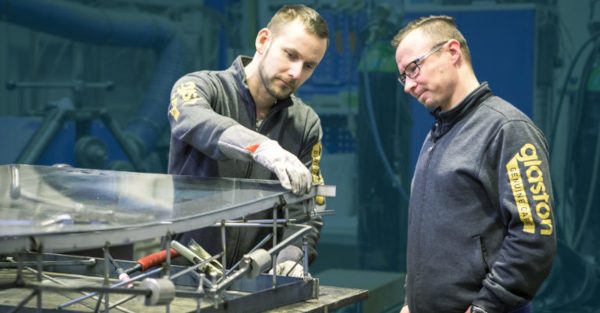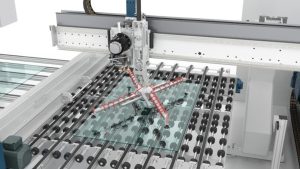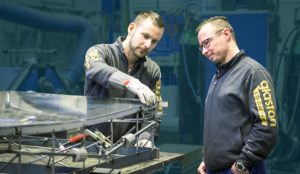BEST PRACTICES FOR ENERGY EFFICIENCY IN THE MANUFACTURE OF AUTOMOBILE GLASS
Jukka Immonen offers some doable advice for maximizing energy use in the manufacturing of automobile glass in the most recent Glastory blog. Every stage of the process, from preprocessing to final inspection, has enormous potential.
Energy efficiency and conservation have become important priorities in light of the recent energy crisis. Organizations are being pushed to change how they use energy across the board by new rules and carbon-neutrality obligations. Automobile makers, like everyone else, are under pressure to expedite their transition to carbon neutrality. Energy conservation in the manufacture of automobile glass is equally crucial as it is for every other component.
Advice on how to save energy at various stages of the process
Preliminary processing of glass during the production of automobile glass
Compared to other stages in the manufacture of automobile glass, preprocessing uses a lot less energy. Still, every penny saved matters. So, we should be aware of any methods that may be used to maximize energy efficiency during preprocessing.
This phase has a strong chance of saving you some energy, in contrast to other glass production procedures. Given that preprocessing glass usually involves a lot of movement, it makes sense to harvest energy and reintegrate it into the system when electric motors slow down the tools.
Having said that, you may save up to one-third of the energy used by preprocessing machines with more conventional designs by using equipment with lighter moving components and energy collection options.
In this stage of the process, it’s critical to minimize material waste for additional energy savings. Here, constant quality and reduced production scrap may be attained with the use of contemporary glass positioning applications.
When bending and tempering glass
The operations that need the greatest energy in the manufacturing of automobile glass are bending and tempering. As a result, they also hold the greatest potential for reducing costs throughout the whole production.
Filling the furnace to capacity is one of the simplest techniques to optimize energy use in glass tempering. Sadly, it’s frequently too difficult to do.
Technology such as convection heating provides an answer to this. Convection only releases as much heat as is required for any given load as it follows the glass during the heating cycle. Thus, savings are substantial even in cases when bed usage rates are low.
Convection also guarantees improved performance and more control over the heating process.
In glass bending
When it comes to increasing energy efficiency in automobile glass bending, there are several factors to take into account.
Heating technique is crucial, to start. Once more, keep in mind that convection heating transfers heat more quickly than radiation heating. Therefore, there is less energy lost throughout the process because to focused and effective heat transfer.
Furthermore, convection heats surfaces evenly on printed and transparent materials. Convection reduces the need for traditional reflecting plates for making windshields and sunroofs, which adds to the energy savings per unit generated.
Secondly, convection heating reduces the requirement for additional equipment, such as radiation shields or suction plates, which are often required to make up for overheated black print. As a result, tooling weight and energy usage drop.
Third, proportions are important. Having the ideal chamber size for the market you serve makes sense. More energy is utilized than is necessary in an enormous chamber.
Fourth, insulation rules. Verifying that the wagon structure is adequately insulated is a smart idea. In this manner, each cycle will heat up less steel mass ineffectively.
Fifthly, attractive designs are useful. Any design must have sound strategic reasoning behind it. For example, modern heaters installed in furnace chamber grooves create an optimal radiation reflecting surface, greatly increasing the efficiency of the heating process. Theoretically, they reduce radiation dispersion and improve heat focus.
Additionally, this provides you with several extra opportunities to save energy if your line’s design allows for natural cooling. For instance, if the line permits side unloading, it takes less time to reheat the wagon for the subsequent cycle. Higher temperatures may be used to unload the glass, and the wagon doesn’t have to cool completely.
Sixth, strong yet lightweight molds are important. Less energy is needed during the process the lighter the molds are. This is why mold-making instruction shouldn’t be disregarded.
In glass lamination
De-airing lines with vacuum rings are used in windshield and sunroof laminating. In comparison to vacuum bag systems, the bulk of the tooling in these systems is quite low, which lowers the energy usage.
Conclusion
As you can see, you might be able to lower your steadily growing energy costs with only a little instruction on best practices. However, adding more sophisticated technology to the current equipment will yield even more quantifiable findings.
These kinds of investments, after all, not only result in short-term cost savings but also, over time, support environmentally friendly corporate practices that aim to slow down global warming.
If you are interested in automating glass processing into your glass production process or would like to know more about how to improve production efficiency. Please contact Robotnext today for advice and cost support. Details via hotline: 0909 914 837.
Other reference applications:




